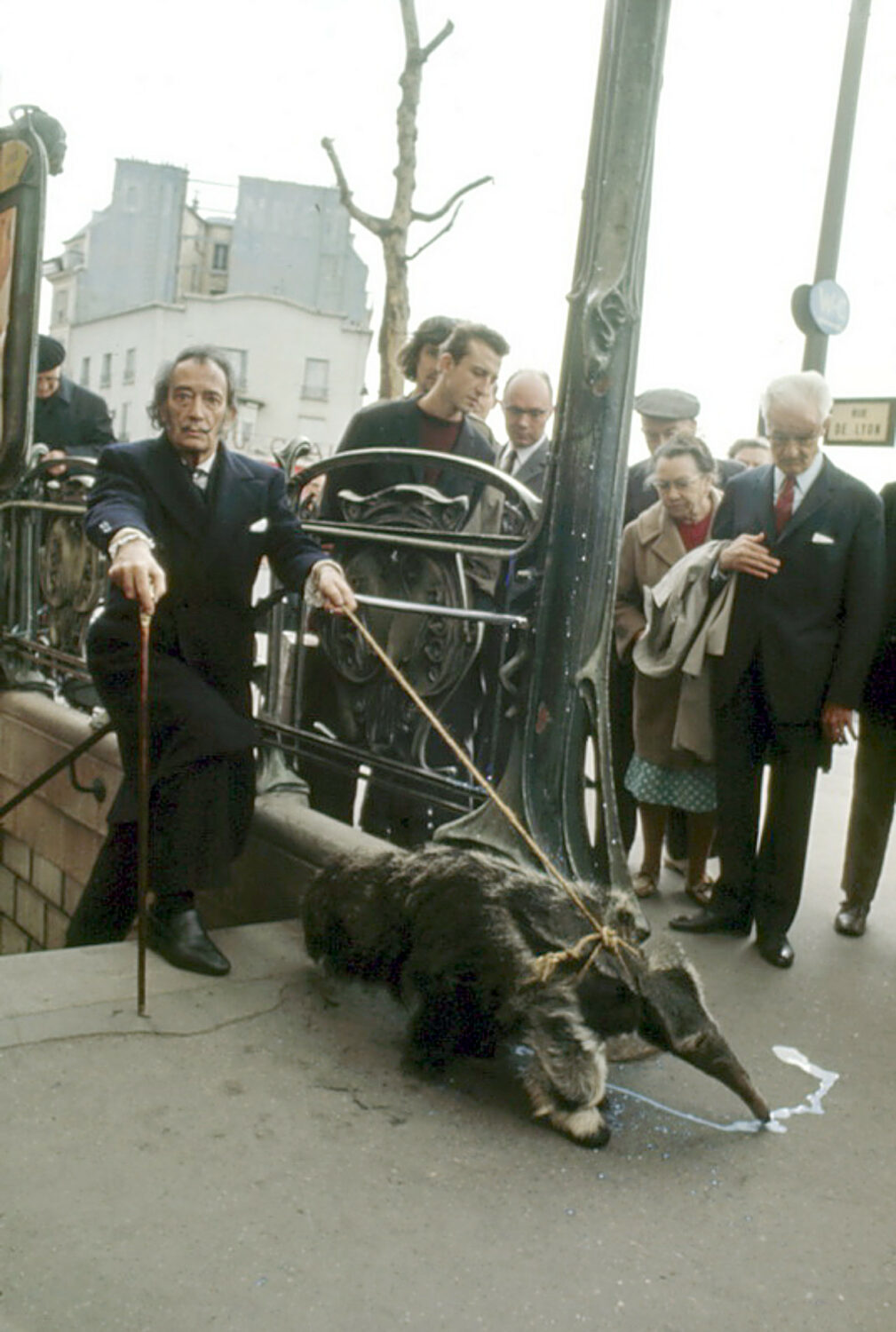The Story Behind Salvador Dalí and the Anteater
By Keshav AnandMuses — protectors, predators, companions and food — animals have appeared in artworks since the beginning of art production. Since ancient depictions of bison in early cave paintings to the works of the Surrealists, and contemporaries beyond, creatures big and small have inspired some of the greatest artists of all time. From the reoccurring presence of ants and swans across his oeuvre, to his famous painting, The Elephants, 1948, Surrealist pioneer Salvador Dalí was evidently fascinated by animals and the symbolic meanings attached to them.
During the 1960s, Dalí was seldom spotted without his pet ocelot, reportedly given to him by the Colombian Head of State. Always adorned with a bejewelled collar, one notable incident including Dalí’s exotic cat, named Babou, involves the artist bringing the creature into a Manhattan restaurant and securing it to his table, much to the astonishment of a nearby diner. To calm his fellow patron’s uneasiness, Dalí assured her that Babou was simply an ordinary cat he had expertly “painted over in an op art design.”

In 1969, a photograph of Dalí stepping out of a Paris Metro station gained a great deal of attention. A few steps ahead of the Catalan artist was a giant anteater. The insectivorous mammal, native to Central and South America, was pictured walking on a leash held by Dalí. Though the immediate assumption by the press was that the animal was another exotic pet belonging to the artist, it turns out, this moment was a choreographed photo opportunity, a sort of performance art stunt, and the anteater was most likely borrowed from a zoo.
There’s more to the story. The founding father of Surrealism, André Breton, who penned the influential Surrealist Manifesto in 1924, was given the affectionate nickname “Le Tamanoir” — in English, “The Anteater” — by his fellow Surrealists, including Dalí, Yves Tanguy and Max Ernst, among others. Breton even wrote a poem titled, After the Giant Anteater, in 1931. The word “anteater” actually only appears in the title of the poem but that’s not really the point. Perhaps Dalí’s Paris stunt was in homage to his dear friend and collaborator, Breton.
The same year the poem was published, Dalí painted The Persistence of Memory, which incorporated ants as a symbol of decay. Shortly prior, he had produced a film with Spanish filmmaker Luis Buñuel, titled Un Chien Andalou (An Andalusian Dog), which featured ants eerily crawling out of a man’s palm. Through his career, he continued to use ants as a motif in various mediums, and even sketched anteaters — like the drawing, André Breton the Anteater. Symbolically, the anteater could be seen as a remedy to decay and deterioration in Dalí’s world.
In 1971, Dalí appeared on the American talk show, The Dick Cavett Show, alongside actress Lillian Gish. Bringing with him an anteater on a leash — a smaller animal this time, loaned from the Bronx Zoo — Dalí tosses the creature onto the actress’ lap. An eyebrow-raising moment, the uneasy animal attempts to crawl behind another guest, as Gish points out, “it’s frightened.” When asked about his fascination with the animal by Cavett, the artist describes anteaters as “angelic.” A master of PR, Dalí knew well by this stage in his career the marketability of his eccentricities but even so, his longstanding affinity to anteaters does seem earnest, and certainly well-documented.
Feature image: Salvador Dalí walking a giant anteater in Paris, 1969. Photo: Pinterest